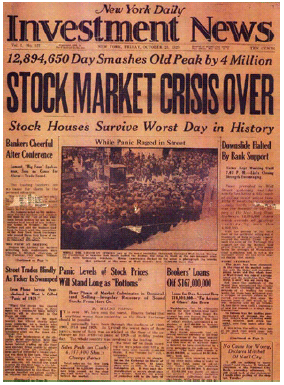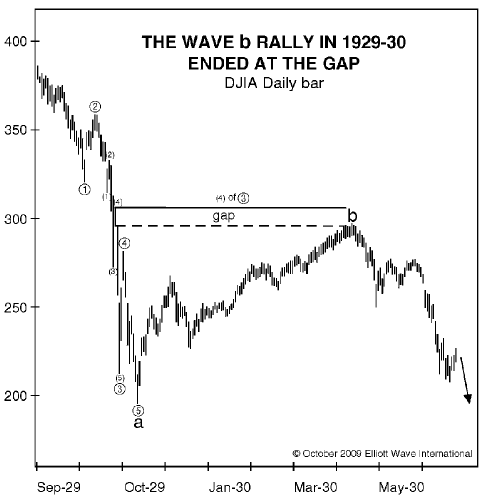Black Monday: Ancient History Or Imminent Future?
By Nico Isaac
The following article includes analysis from Robert Prechter’s Elliott Wave Theorist. For more insights from Robert Prechter, download the 75-page eBook Independent Investor eBook. It’s a compilation of some of the New York Times bestselling author’s writings that challenge conventional financial market assumptions. Visit Elliott Wave International to download the eBook, free.
Once upon a time, the term “Black Monday” was to Wall Street what the name “Lord Voldemort” was to Hogwarts. It turned the air freezing cold and sent traders flinching around every corner in fear of a repeat of the October 19, 1987 or October 28, 1929 meltdown.
Case in point: The 2008 “Black Monday” anniversary. At the time, the U.S. stock market was locked in a ferocious downtrend that included regular, triple-digit daily declines of 400 points and more. Needless to say, when the final two Mondays of October arrived, the least superstitious investors surrounded their portfolios with more good-luck talismans than a Bingo player. See October 19, 2008 AP headline below:
“Black Monday: Stocks Sink As Gloom Seizes Wall Street. Prolonged Economic Turmoil” is seen.
That was then. Today, the usual dread surrounding the back-to-back string of “Black Mondays” is nowhere to be found. In its place, media reports abound of a new, global bull market “shrugging off,” “ignoring,” and “making a distant memory” of the event.
For one, “gloom” hasn’t “seized” the U.S. stock market in quite a while; from its March 2009 low, the Dow has risen more than 50% to above the psychologically important 10,000 level. For another, the mainstream experts insist that today’s financial animal is unrecognizable to that of 1987, and especially 1929. In their eyes, it’s a completely different — i.e. safer, smarter, and sounder system.
We beg to differ.
See, while the usual experts want to put as much mental distance between today’s market and those that facilitated the 1987 recession and 1929-1932 Great Depression — the physical similarities are impossible to ignore; more so, in fact, to the latter scenario.
Here, the October 2009 Elliott Wave Financial Forecast presents the following news clip from the October 25, 1929 New York Daily Investment News.
 |
Now, take a look at these headlines from the week of October 12-17, 2009:
- “The Great Recession Is Over.” (Reuters) — “80% of Economists Say The Worst Is Behind Us.” (CNN Money) — “The Bull Is Back” (AP) — “The Economic Recovery Is Well Underway” (Wall Street Journal)
- They’re interchangeable — Eighty years later.
Along with a similar extreme in bullish sentiment, the performance of stocks between now and the 1929 situation is cut from the same cloth. After an initial plunge from August 1929 through late October 1929, the US stock market enjoyed a powerful rally well into the following year. NOW: After a steep freefall from its October 2007 peak, the US stock market is once again enjoying the fruits of a powerful rally back to new highs for the year.
Also, on closer examination, the October 19 Elliott Wave Theorist (EWT, for short) uncovers an even deeper parallel between the 2009 rally and the 1929-30 one. Here, EWT presents the following snapshot of the Dow during the Depression-era advance:
 |
As Bob Prechter points out — in 1930, stocks rallied to the level of the preceding year’s gap. Bob then reveals that the same level has been reached now.
So, we all know how the 1930 rally ended. The question is whether the 2009 advance will experience the same fate. As Bob explains in the Theorist, the only way to know for certain is to “look at the reality of the situation.”
For more information, download Robert Prechter’s free Independent Investor eBook. The 75-page resource teaches investors to think independently by challenging conventional financial market assumptions.
Robert Prechter, Chartered Market Technician, is the world’s foremost expert on and proponent of the deflationary scenario. Prechter is the founder and CEO of Elliott Wave International, author of Wall Street best-sellers Conquer the Crash and Elliott Wave Principle and editor of The Elliott Wave Theorist monthly market letter since 1979.